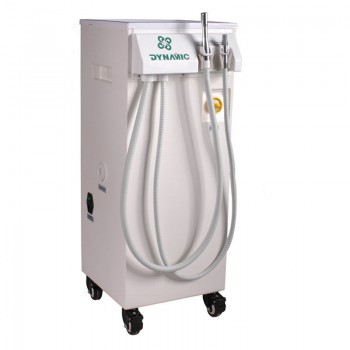There are two main types of dental suctions unit that dentists use: the saliva ejector and the high volume suction. The saliva ejector does exactly what its name implies; it sucks saliva out of the mouth. This is the suction pictured at the upper right of this article. Many times dentists will have the patient close down on this suction so that it can suction away any remaining saliva in the patient’s mouth.

The other main type of dental suction that we use is the high volume suction. This suction is so strong that the dental assistant simply holds it close to where the dentist is working and it will suck away any nearby debris, much like a strong vacuum cleaner can suck away crumbs without actually touching them.
During some procedures, such as white fillings, it is important that the tooth stay clean and dry. The suction helps keep the tooth dry by sucking away any saliva, blood, and water that may have accumulated around the tooth. If the cavity went below the gum-line, then it’s pretty likely that the gums will bleed during the filling.
The drill that dentists use to do fillings sprays out a lot of water to keep the tooth cool and clean. Unfortunately, that water can quickly build up in the mouth and get on the dental mirror. In order to ensure that the dentist can see the tooth while working on it, it’s necessary to use the high volume suction to suck away all of that debris.
Those are the four main reasons that I came up with as to why dentists use the dental suction. In conclusion, let’s take a look at a question that I asked my dental hygienist as a child.
Keeping the patient comfortable is a high priority. In response to Jeanny’s question, we suction after giving anesthetic because the anesthetic has a bitter taste, and most patients prefer to rinse out with water and use the saliva ejector. Also, if the anesthetic sits in the back of your mouth for too long, it may start to slightly numb the back of your mouth and could give the patient a gagging sensation.